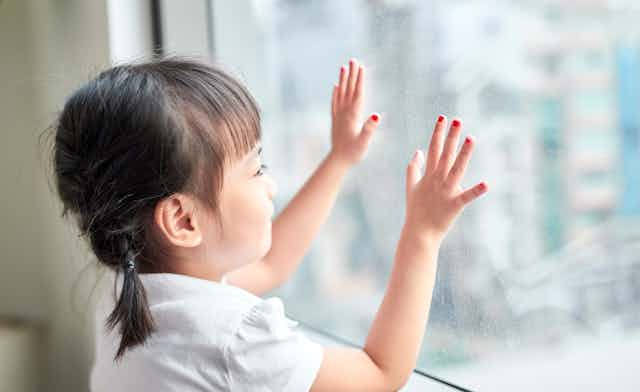Curious Kids is a series for children. If you have a question you’d like an expert to answer, send it to curiouskids@theconversation.edu.au You might also like the podcast Imagine This, a co-production between ABC KIDS listen and The Conversation, based on Curious Kids.
Why do we have fingernails and toenails? - Jake (age 9) and Ben (age 7), Melbourne.
The reason we have fingernails and toenails is not to pick our noses or to scratch our siblings.
The short answer is we have evolved to have nails because they help us pick things up (like food), pick things off (like bugs), and hold tightly onto things.
Early humans who had these type of nails (instead of claws) tended to live long enough to have babies and pass on the fingernails gene to their kids. So over time, the number of human ancestors with nails grew and the number with claws shrunk. That’s how evolution works.
But the story goes back further than that.
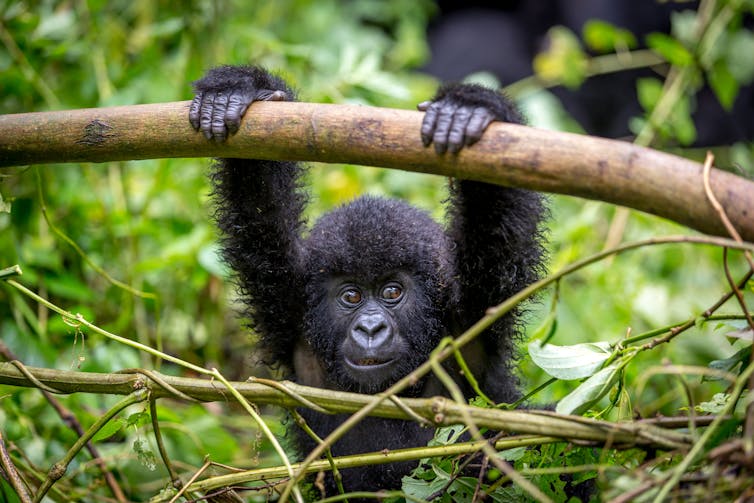
Our primate ancestors and cousins
Humans are members of the primate family. The primates are the most intelligent group of mammals (mammals are animals who do not lay eggs). Primates have evolved to have nails.
That’s why you see primates like apes and monkeys also have nails on all their fingers and toes, as well as our closest primate “cousins”: gibbons, bonobos, chimpanzees, gorillas and orangutans.
While humans don’t usually use our toes these days to pick things up, our primate cousins do. So our toenails are a hangover from a time in our evolutionary past where we often used our feet to pick stuff up and pick stuff off.
All these primates – including us – evolved from a common ancestor that had claws.
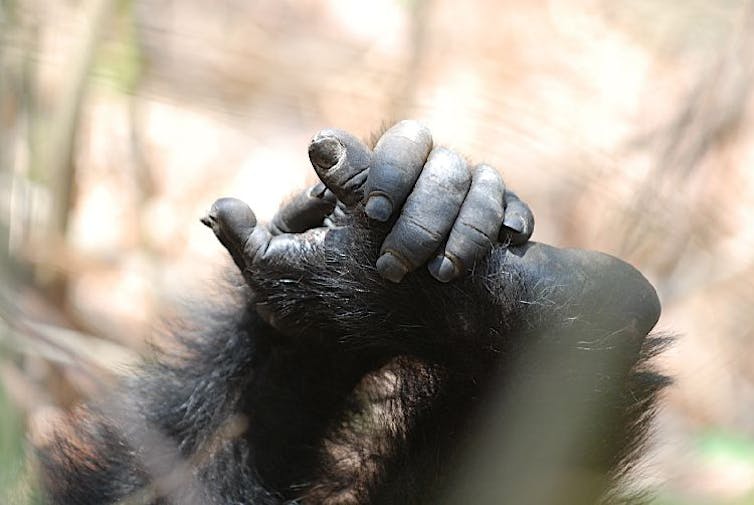
Nails vs claws
So why did we evolve to have nails instead of claws? The answer is that nails let us do a lot of important things that you can’t do with claws.
Compare your nails to those of a dog or cat. Your nails are wide, flat and shield-shaped. They are also on the back of the tip of your fingers and toes.
A dog or cat has claws that are thin, curved and pointed. They wrap around the end of their “fingers” and “toes”.
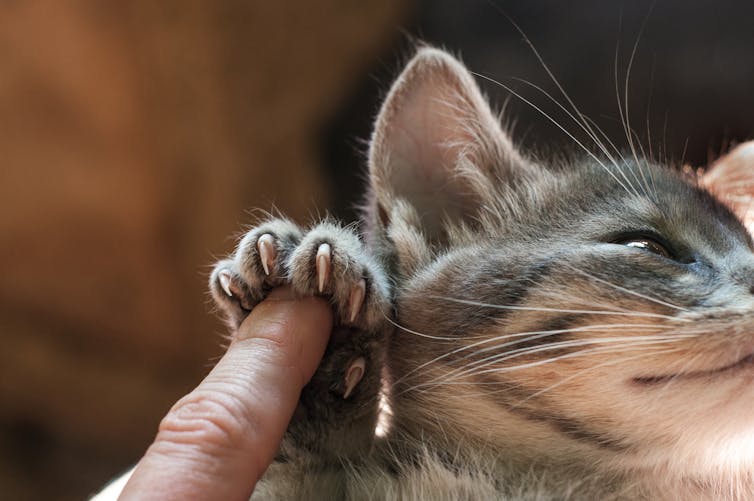
By having nails, you can pick up tiny things like small LEGO bricks off the ground, pick off stickers, or pick a bug off you easily. You can make and use tools. Can a cat do that with its claws? No! In fact, having super-long, clawlike nails can make it really hard to do a lot of things humans need to do – like eating, washing and holding things.
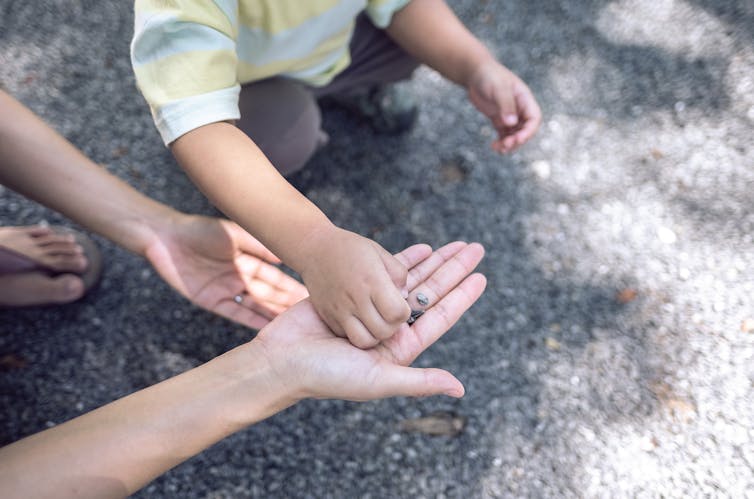
On the other hand, claws are useful for some things that cats and dogs often need to do.
By having claws, your cat can quickly run up a tree (even if it doesn’t have many lower branches) to catch a bird. Plus your dog can dig up your backyard in one afternoon (to find food, for example).
Primates also climb trees but we mostly do it by grasping onto branches, and long claws get in the way when you’re grasping. Nails provide a rigid backing to primates’ fingertips to improve grasping. We dig too, of course, but we use tools for that. You don’t have the same needs as a dog or a cat, so you don’t have the same type of nails or claws.
Each type of animal has evolved to have the type of finger-covering (either claws or nails) that best suits its needs.
Read more: Curious Kids: how do tongues taste food?
What if we didn’t have nails?
Imagine for a moment that humans didn’t have nails. First, a lot of nail salons would go out of business, and we couldn’t enjoy painting our nails lots of different colours.
But more importantly, having a lump of soft skin at the end of our fingers would make it harder to hold things and control our grip on them. The ends of our fingers and toes have changed to match our changed lives.
So next time you’re at the zoo, look at the hands of gibbons, chimpanzees, gorillas and orangutans, and you’ll see they have nails just like yours. Think about all the amazing things we primates can do with nails.
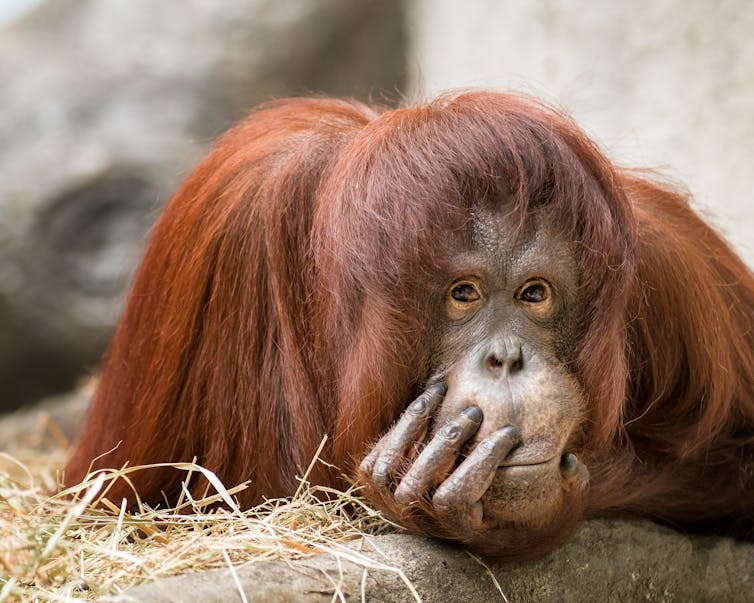
Read more: Curious Kids: is everything really made of molecules?
Hello, curious kids! Have you got a question you’d like an expert to answer? Ask an adult to send your question to curiouskids@theconversation.edu.au

Please tell us your name, age and which city you live in. We won’t be able to answer every question but we will do our best.

